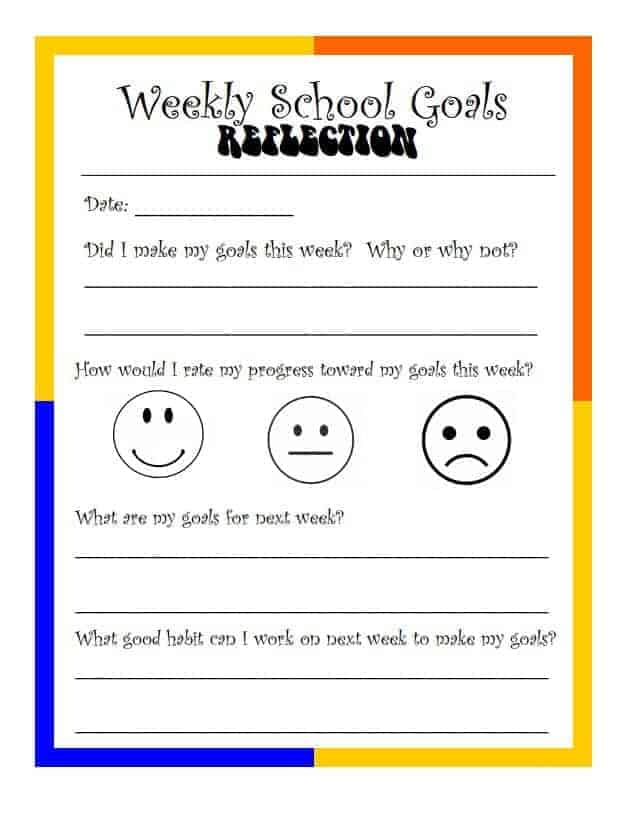Contributors: Peggy Ployhar and Christina Belbas
Read ahead:
- Teaching the Student with ADHD, ADD, Epilepsy and Executive Functioning
- Teaching the Student with Epilepsy & Seizures
- Teaching the Student with Dyslexia
- Teaching the Student with Dysgraphia
- Teaching the Student with Sensory Processing Disorder, ASD and Aspergers
- Teaching a Student with Down Syndrome
- Teaching the Student with Severe and Multiple Disabilities
- Teaching the Student with Apraxia and Speech Delays
- Teaching the Student with Hearing Impairments
- Teaching the Student with Visual Impairment
One question I am asked on a regular basis is: “How do I teach the five basic homeschool subjects required in Texas when my child has a special learning need?”
Below I have addressed the most frequent special needs learning diagnoses. I hope these listings (and the linked resources) help you as a special needs homeschooling parent to understand the basics of teaching your student, and build confidence in your ability to accommodate your child’s specific learning needs.
The lists below are guidelines based on generalized prevalent struggles a student experiences with a specific diagnosis. In addressing the specific subject of “Good Citizenship,” generalized ideas are provided only on how to incorporate five primary themes of honesty, compassion, respect, responsibility and courage into your student’s study and activities. More specific suggested activities for good citizenship can be found at EducationWorld.com.
Remember, when teaching any child, it is always best to provide instruction at your student’s cognitive level instead of their age or grade level because that is the level your student is able to comprehend the presented material. Each child is unique and should be taught accordingly.
Teaching the Student with ADHD, ADD, Epilepsy and Executive Functioning
Reading: Use e-books with an auditory component to listen to while reading on the screen. Teach reading in small chunks so the student can be quizzed about what he or she read and process sections before moving on.
Writing: Allow writing to be done with visual aids (drawn pictures or PowerPoint). Use back and forth dialogue to help your student consider details left out of the writing, pictures or presentation.
Spelling: Use apps for spelling and vocabulary that repeat words often to solidify a word’s spelling and definition.
Math: Use a math program without excessive words or distracting pictures, stressing repetition of already learned facts.
Good Citizenship/Electives: Part of good citizenship is responsibility, and your student can learn responsibility through organizational skills. Have your student create lists, timelines, organizational charts and calendars to keep track of their lessons and activities.
For a more comprehensive list of accommodations and modifications for a child with executive functioning issues, read Executive Functioning…”What is this anyway?”
Teaching the Student with Epilepsy & Seizures
After a seizure, a child’s brain “resets” and loses most short-term memories, meaning that any recent lessons must be repeated.
With an epileptic student, a homeschooling parent should consider these best practices:
- Stay consistent with any medications and research their side effects. While medication can drastically reduce seizures, it can also induce drowsiness or decrease focus.
- Learn to recognize seizures and keep your student safe when a seizure occurs. Episodes can range from mildly twitching facial muscles to a severe “drop seizure.”
- Once the student recovers, be prepared to repeat lessons to ensure the student absorbs the information.
For more information on epileptic care and education, visit the Epilepsy Foundation’s website.
Teaching the Student with Dyslexia
Reading: Use e-books with an auditory component. Use videos to supplement reading material and constantly test new methods to help your student gain work-around strategies for Dyslexia struggles.
Writing: Do not limit writing to just text on paper or a device. Allow your student to express knowledge, stories and material through oral presentations, art, music, filmmaking and other means.
Spelling: Use a spelling program that teaches words by groups. Allow spell check on longer assignments. Realize that spelling for a dyslexic child will progress at a much slower pace than a child who does not have dyslexia—be patient.
Math: Minimize word problems or math programs that require reading. Visual-spatial math programs or online math curricula with visual “whiteboard” instruction work best.
Good Citizenship/Electives: Emphasize good citizenship and social interaction through active assignments, such as volunteering at a local food bank for the day. Afterwards, have your student complete a visual project—such as a short video—showing how they helped people that day.
In every subject, it is important to teach your student how to find methods to intake information in a logical and meaningful manner. Forcing your child to read a textbook about history when they cannot understand the text will teach them much less than finding an engaging historical fiction audio book or documentary movie on the subject. Focus on content delivery when finding ways to teach your student.
For a more comprehensive list of accommodations and modifications for Dyslexia, read 5 Common Accommodations and Modifications for Dyslexic Students.
Teaching the Student with Dysgraphia
Reading: Look for reading instruction material that does not require copy work.
Writing: Consider teaching cursive writing before printing, allowing answers to be presented in verbal form. This will teach your student to type at an earlier age, removing the need for long, handwritten assignments. Remember, very little manual writing is required in adulthood due to advances in technology. Therefore, as your student learns additional subjects, it is crucial to focus on methods of clear expression to make up for limited skills in manual writing:
- Keyboarding
- Talk-to-text
- Presentations
- Oral delivery
Spelling: Teach spelling orally or through an app and allow the student to use spell check on longer assignments.
Math: Use a computer-based math program or a curriculum with one-on-one instruction where the child can answer verbally.
Good Citizenship/Electives: Consider studying a language like American Sign Language (ASL), which has no direct written equivalent. Students can also pursue active interests such as dance or P.E.
For a more comprehensive list of accommodations and modifications for dysgraphia, read Dysgraphia Accommodations and Modifications.
Teaching the Student with Sensory Processing Disorder, ASD and Aspergers
Reading: Find reading material that relates to the interests of your student—using many audio and visual means to tie written material into your student’s school work—while he or she is still learning the basic mechanics of reading.
Writing: Make writing assignments logical, short and for a specific purpose.
Spelling: Teach spelling by word groups.
Math: Teach math in a very logical progression with application-based instruction tied to logic, physics, accounting and statistics.
Good Citizenship/Electives: Your student’s interests will motivate additional learning in many different settings. Use unit studies to incorporate other subject matter into your school day and to teach your child how their interests blend with their world.
For a more comprehensive list of accommodations and modifications for autism, read about do2learn ASD Strategies. Also consider these two resources:
- Worksheets for autistic students can be downloaded for free at EducateAutism.com.
- Consider using a free worksheet from TeachersPayTeachers.com to help match and identify days and months.
Teaching a Student with Down Syndrome
Reading: Use material that can be accompanied by pictures to help aid in the understanding of the material being read.
Writing: Use real-life communication as a bridge to connect verbal conveyance of facts and stories with written words, paragraphs and longer literary works.
Spelling: Use methods that involve rhyming, songs and the teaching of word groups.
Math: Use a math program with manipulatives. Most students with Down syndrome struggle with abstract concepts; manipulatives work to connect concrete and abstract ideas.
Good Citizenship/Electives: Work with the student on projects to help them learn—such as making flashcards—and determine what does and does not work. Above all, teach your child at a cognitively appropriate level and not his or her age level (unless the subject demands age-appropriate instruction).
For a more comprehensive list of accommodations and modifications for Down syndrome, read the section “Teaching Children with Down Syndrome” in this paper: Down Syndrome Association of Minnesota: Education Resource Packet.
Teaching the Student with Severe and Multiple Disabilities
Reading: Read-alouds, movies and audiobooks all convey stories and facts (which can be considered pre-reading activities). Learning to track objects with their eyes is another pre-reading skill.
Writing: Pre-writing activities include learning how to hold objects, learning to move a hand to touch a communication device, and any other motor skills a student can work on to refine large motor into fine motor movements.
Spelling: Pre-spelling activities have to do with word formation, sounds and use of language to convey meaning. For nonverbal students, spelling can translate into being able to properly pick cue cards or communication device buttons.
Math: Pre-math activities help children to learn that the world they live in has order, line, shape and form. Therefore, instruction can include anything that allows students to interact with those concepts.
Good Citizenship/Electives: For a severely disabled student, good citizenship likely means understanding how to relate to the world around them. Your instruction gives your student skills to understand how their world functions and how to use their abilities to convey needs, discover and learn as lifelong activities, and to interact with their surroundings.
For a more comprehensive list of accommodations and modifications for students with – severe learning delays, read Access and Attain: Active Learning for Students with Severe and Multiple Disabilities.
Teaching the Student with Apraxia and Speech Delays
Reading: Read out loud using manipulatives or communication devices to help your student sequence the material. Take it slow with the entire reading process, using lots of verbal repetition that he or she can hear.
Writing: Writing should be viewed in the same manner as reading. Take it slow; use manipulatives and communication devices to help the student create stories and list facts that he or she is unable to verbalize orally.
Spelling: Spelling is learning the sounds that letters make to build words. If your student is in speech therapy to learn how to position his or her mouth to say letters and then combine those letters to build words, these exercises should be considered pre-spelling activities. From those activities, build on sounds and blends to create words and learn spelling.
Math: Addressing math at early levels for a child who deals with speech issues often requires the need to concentrate a fair amount of time on learning proper sequencing. Once a child learns that there is a sequence that needs to be followed to solve math problems and learns their numbers, use a math curriculum that requires very small amounts of spatial learning without manipulatives.
Good Citizenship/Electives: Allow your student to explore non-verbal forms of communication in addition to oral training. While speech is vitally important, communication of any sort can help your student immensely in the meantime.
For a more comprehensive list of accommodations and modifications for a child with speech issues, read Literacy and Children with Apraxia of Speech.
Teaching the Student with Hearing Impairments
Sometimes a student’s speech delays may be the result of partial or complete deafness. Homeschooling parents of a deaf child should be aware of the following:
- Communication doesn’t have to be verbal. American Sign Language (ASL) is very widely used and allows the student to express himself.
- Writing can serve as another way to communicate, so literacy is crucial for a hearing-impaired student.
- Learning should focus on visual cues such as images or writing rather than auditory cues.
For more information on homeschooling a deaf or hard of hearing student, visit this Yahoo Group, Deaf Christian Homeschool.
Teaching the Student with Visual Impairment
Reading: Use braille, audio books or enlarged print to meet the specific visual needs of your student.
Writing: Visual discrimination issues often require longer initial instruction of pre-writing skills, which may include use of assistive technology. Use of verbal means to communicate ideas, stories and understanding of concepts also helps a student’s pre-writing skill set.
Spelling: Spelling instruction needs to be tailored specifically to the reading and writing needs of the student and any assistive technology necessary for him to accommodate those needs.
Math: Math taught with manipulatives (such as a moveable counter/number line or abacus) are helpful in teaching math facts to a student with visual impairments.
Good Citizenship/Electives: Teaching a child with a visual impairment may require assistive technology and longer instruction time due to the obstacles a student must overcome. While your student is developing these basic communication skills, always stress learning as an exciting means for exploration and discovery. Emphasize interacting with their peers and sharing what they have learned.
For a more comprehensive list of accommodations and modifications for a visually impaired child, read Teaching Students with Visual Impairments: School Adaptations.
Peggy Ployhar, TTHSC Lead Writer and SPED Homeschool Founder & CEO
Peggy Ployhar, SPED Homeschool Founder & CEO, is a leader in the special education homeschooling community and a frequent writer and speaker on special education homeschooling issues. Peggy’s journey into homeschooling started 18 years ago when her oldest child was diagnosed with Asperger Syndrome.
Peggy is the former THSC (Texas Home School Coalition) Special Needs Team Lead, MACHE (Minnesota Association of Christian Home Educators) Special Needs Coordinator and MOPS (Mothers of Preschoolers) Area Coordinator for MN, ND and SD. She is certified by the American Association of Christian Counselors and trained as a Precept Bible Study leader.
In her free time Peggy enjoys aerial silks, paddle boarding, cooking, hiking and reading.
You can tune in every Tuesday evening on the SPED Homeschool Facebook page to watch Peggy host SPED Homeschool Conversations, a weekly talk show about special education homeschooling or you can join her daily on her personal YouTube channel, Daily Revelations.




